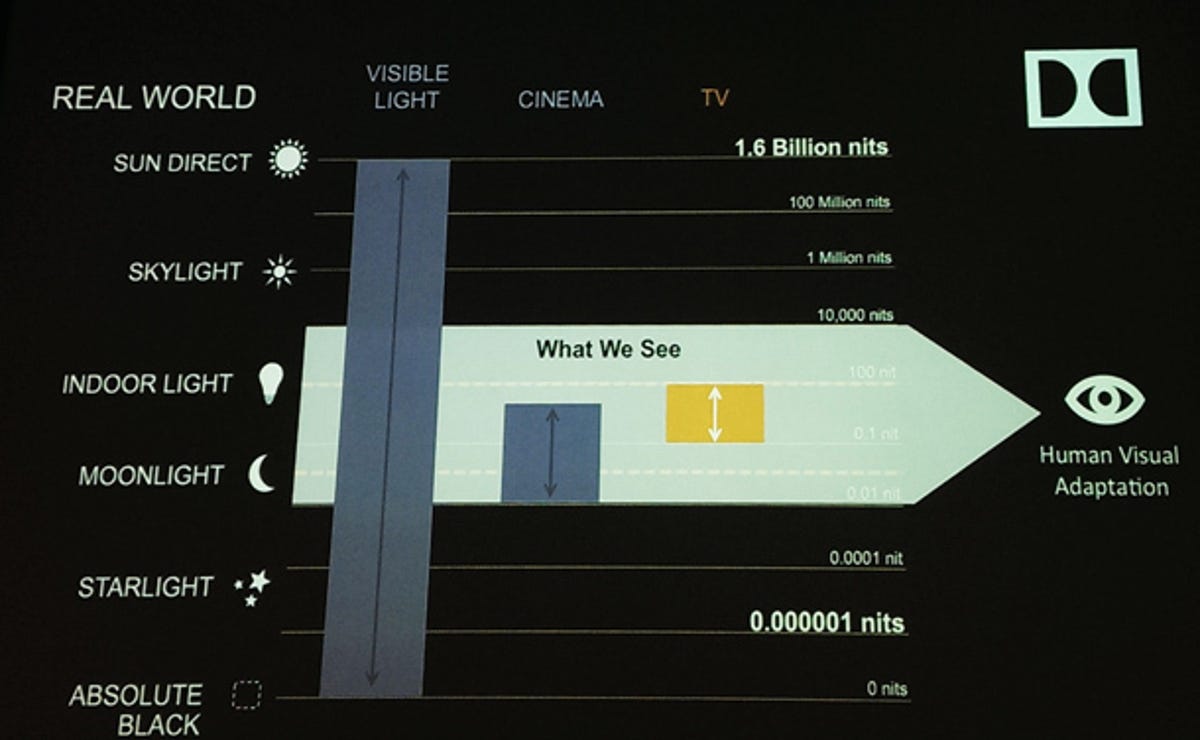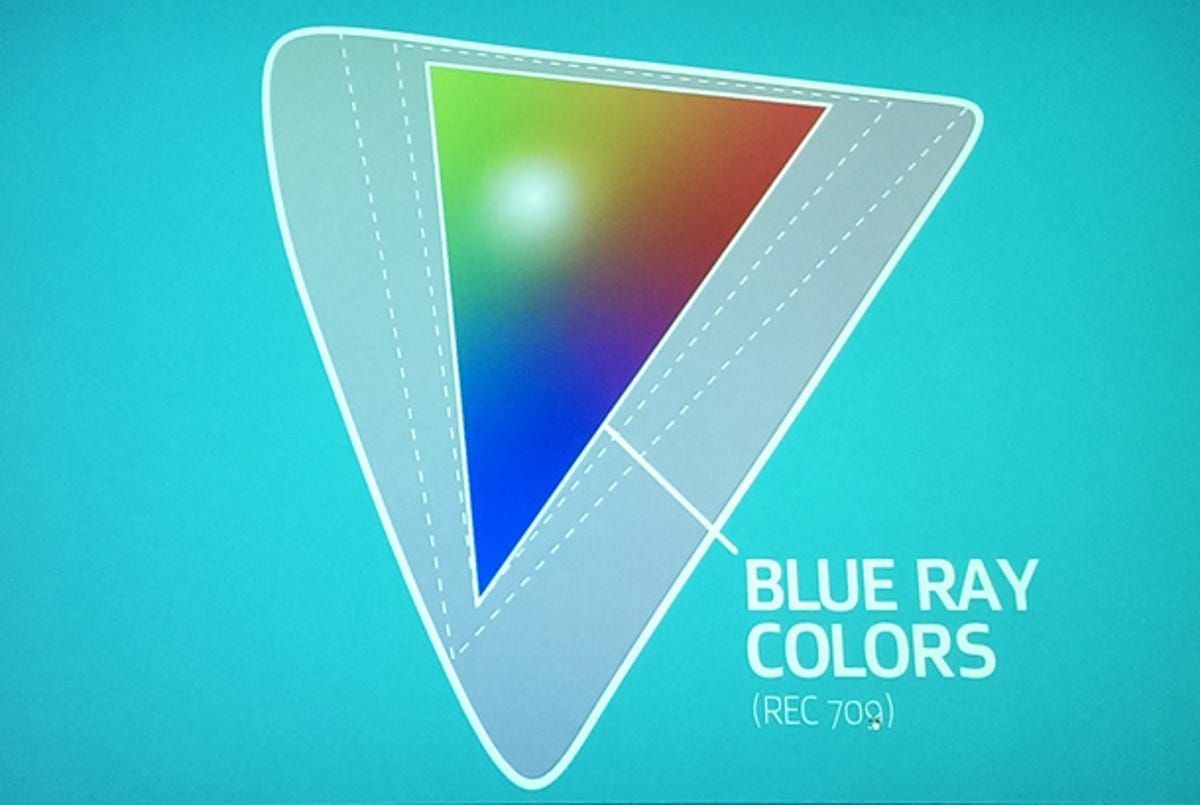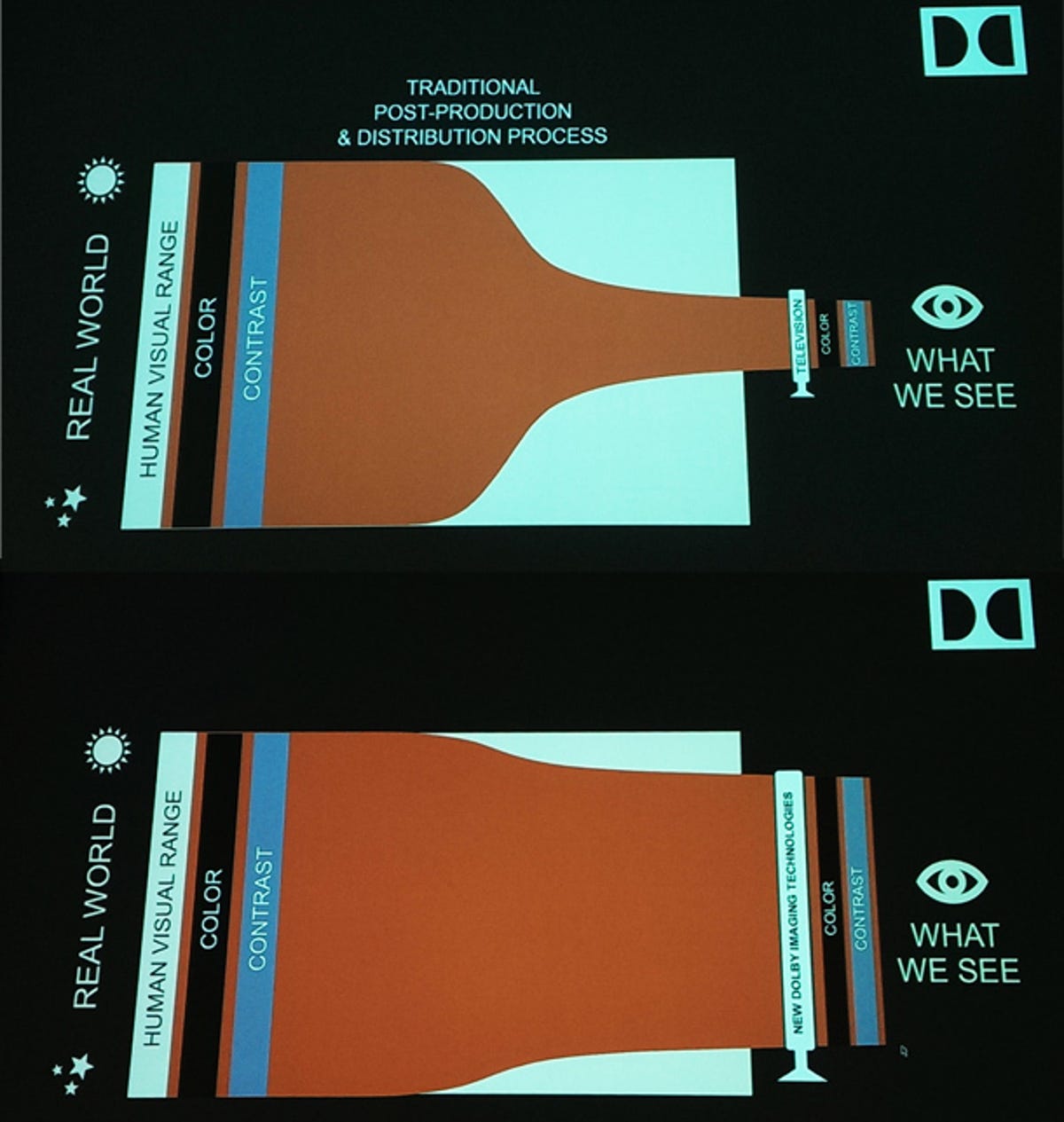While the majority of the TV industry prattles on about higher and higher resolutions, few talk about improving other, more important aspects of the TVs picture: contrast ratio and color.
Dolby, though best known for its audio technologies, has been doing a lot with video recently too. The latest development addresses dynamic range, or difference between light and dark, for televisions. The company says it wants to enhance not just contrast ratios, but the richness and realism of color as well.
Dolby won’t be announcing the official name of this tech until CES next month, but for now let’s call it the Dolby High-Dynamic Range Television System because it shares a lot of the same characteristics of HDR imaging. Here’s why it’s cool (potentially).
The multiple levels of picture quality
There are three aspects to the picture that Dolby hopes to improve: Brightness, contrast, and color. In reality, all three of these things are related.
Increasing the brightness of a TV, in itself, isn’t difficult. You just use more LEDs, in the case of LCD TVs, and run them brighter. Easy. This does nothing for contrast, however. With an LCD, contrast is largely independent from brightness because making the picture brighter also raises the black level. With plasma and OLED, additional brightness requires more power, but eventually you’ll run into the limitations of the technology (phosphors, power supplies, etc.).


Dolby
Regardless of the technology, Dolby’s interest in a 20,000 nit television (roughly 5,837 foot-lamberts, or 500-1000 times brighter than your current TV) itself seems foolish for an indoor TV. After all, current TVs are often too bright, and can cause eyestrain.
Dolby’s not after brightness for brightness’ sake, however. Instead, it wants the highlights to be really bright, while the rest of the image is not, for a greater contrast ratio. Parts of the image might be 20,000 nits, but the rest is dimmer. Even in a dark room, this produces a more realistic image. Bright areas pop in a lifelike way. Dolby’s prototype (discussed below) uses a local-dimming LED backlight to create this incredible contrast, but a technology OLED is able to achieve something fairly close on its own.
The last aspect is color. Right now, the modern TV system doesn’t have rich or bright colors, not compared with film or real life. With extra brightness potential, and a larger color gamut, and greater bit depth, richer looking images are possible, with brighter colors than what’s possible now. Check out Ultra HD 4K and beyond: Rec. 2020 glimpses the future of TVs for more on better, more realistic color.


Dolby
The prototype TV
To showcase its tech, Dolby built a prototype television. Based on its broadcast monitor, it’s essentially a local-dimming backlight LCD on steroids. Where the $40,000 broadcast monitor has 4,500 individually addressable red, green, and blue LEDs, this prototype has 18,000 , and each one is addressable. To put that in perspective, top-of-the-line LED LCDs on the market now have a few hundred, and they are definitely not individually addressable.
The RGB backlight and color filters on the LCD panel are capable of a wider color gamut than current TVs, the digital cinema color space, to be specific.
Related stories
- LED LCD vs. plasma vs. LCD
- Why all HDMI cables are the same
- Active 3D vs. passive 3D: What’s better?
- How big a TV should I buy?
- Why Ultra HD 4K TVs are still stupid
- What is refresh rate?
- Audiophile Odyssey: Behind the Scenes at B&W, Meridian, and Abbey Road Studios
Current-gen content would certainly look cool on a TV like this, but Dolby wants to go further. The signal itself has to get better to truly take advantage. For the demo we were shown, cinema-quality digital cameras were used, and processed by Dolby, for a wider color gamut and bit depth. Then, it was processed again using current-gen levels. In a darkened room, Dolby showcased the prototype TV with the high dynamic range signal, next to the “traditional” signal next to one of its broadcast monitors tuned to mimic a current-generation TV.


Dolby/Geoff Morrison
The difference was dramatic, as you’d expect. The brightest parts of the image were exceptionally bright, while the rest of the image remained “normal.” Think about standing outside, the land around you is lit, but the sun is bright. That’s the idea here (though of course not actually as bright as the sun). It’s the higher sense of realism that higher contrast displays have (OLED, plasma). The Dolby prototype, of course, is significantly brighter.
One of the most telling scenes was a polished WWII airplane. The reflections off the metal popped, as they would in real life, where on the “current-gen” display, they were merely white spots on a silvery paint job.
Not about the TV, exactly
While the TV itself is cool, I don’t think anyone would believe you could make a TV with 18,000 LEDs cost-effective. The direction all TV companies have been going the past few years has been toward fewer LEDs. But it’s important to point out Dolby isn’t intending to make a television (it’ll leave that to tech partners, which will also be announced at CES). It’s trying to expand what is possible with the current TV system. Expanding the dynamic range of the signal could allow a better image on any device capable of higher dynamic ranges (OLED, perhaps?).
While the company didn’t go into too much detail, it explained that its idea for this higher dynamic range, wider color gamut image, would be backward-compatible. As in, its 12-bit signal could be “mapped down,” essentially downconverted, to work on 8-bit devices. This would certainly ease the transition.


Dolby
Bottom line
Greater contrast ratio, better color, and a better-quality signal, are all things we’ve been talking about and hoping for here at CNET for years. These other aspects of the image will have a far better effect on overall image quality over one easily marketed resolution number, like 4K. But despite Dolby espousing the picture quality virtues that I’ve tried to be a champion of, I can’t help but be skeptical of its chances.
There is a lot that needs to change for this technology to be anything. Dolby downplays this a bit, pointing out the current generation of camera can already shoot in wider gamuts and with a greater contrast than what’s possible to see on the average home TV. But forging the links in the chain from there, namely distribution, is going to be tough. Netflix can barely transmit a quality HD image to most homes, despite its promise to deliver 4K next year. Downloading something of even Blu-ray quality would take most of a day in many parts of the country.
But it might take a company like Dolby, which is powerful and respected in the home theater space as more of a partner than a competitor to most manufacturers, to push other companies to adopt the changes necessary.
We’ll hear more about the potential future of this as-yet-unnamed tech at CES, along with the names of the manufacturing partners. Stay tuned, and count me interested.
In the meantime, Dolby has a blog talking about some of this that’s worth checking out.
Got a question for Geoff? First, check out all the other articles he’s written on topics like why all HDMI cables are the same, LED LCD vs. plasma, active versus passive 3D, and more. Still have a question? Send him an e-mail! He won’t tell you what TV to buy, but he might use your letter in a future article. You can also send him a message on Twitter @TechWriterGeoff or Google+.




